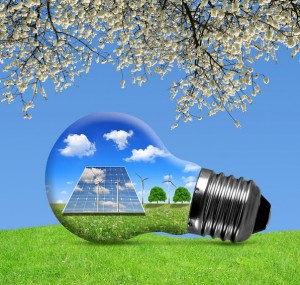
Good news, renewable energy is here to stay. It’s becoming a much larger part of the worlds’ total energy production, and it supports a more diverse energy network to give customers control over how their energy is produced. However, the importance behind this relatively new way to produce energy doesn’t stop there. Below are some of the areas renewable energy supports, specifically our infrastructure, economy, and environment.
Renewable energy reduces environmental impact
Generating electricity from fossil fuels accounts for some serious industrial air pollution in the U.S. It’s the second-leading cause of air pollution, and it’s linked to some devastating impacts on local ecosystems, including groundwater pollution, acid rain, smog, and increased mercury deposits.
This primary source of energy production also ripples across the globe. Because a lot of our energy comes from burning fossil fuels, such as coal and natural gas, this causes greenhouse gases to be released, contributing further to global climate change.
How does renewable energy reduce this environmental impact? To put it simply, renewable energy doesn’t need to be burned to give off energy or be extracted from the earth. And because it’s an infinite source of energy, there are tremendous market opportunities to expand renewable technology that a finite supply of coal or natural gas just doesn’t have. While consumer demand drives a lot of this expansion, federal mandates and environmental regulations are another supporting factor.
Although renewable energy isn’t yet ready to shoulder the entire energy demand for the U.S., production cost is decreasing to the same levels as fossil fuels. For instance, from 2009 to 2016, generating electricity from wind dropped 66%. From 2010 to 2017, the cost of installing solar dropped 70%.
This equal production cost for both fossil fuels and renewable sources is known as grid parity. As consumer interest and government policies help drive down the production costs from alternative sources, more states should be able to take advantage of renewable technologies, even if they don’t have as many natural resources as other states. In fact, this wide access to different types of renewable energy production will help make grid parity a reality, and it’s much closer than we realize. Grid parity is expected to be achieved in 42 states by the end of 2020.
Renewable energy benefits the economy
This may come as a surprise, but renewable energy is bringing stability to energy prices. Demand has a much more direct link to fluctuating gas prices that simply isn’t felt in the renewable industry. Because a single source of energy isn’t responsible for the entire demand, prices are able to find a balance across the board. Additionally, renewable energy sources, such as wind, solar, and hydro, don’t have the same fuel costs or transportation requirements associated with them. This allows utility companies to pass the savings onto the customer. Now, production cost is the determining factor for price, and the consumers are on the winning end.
Renewable energy provides more security
Just as multiple energy sources can drive down cost, it can also provide more reliability. If production dips in natural gas, it shouldn’t be felt by the consumer or the market as easily because the other energy sources, like solar, wind, and hydro, can pick up the slack. In fact, the benefits of a wider energy net extend beyond just pricing. Because fuel no longer needs to be imported as often because of a diversified energy network, a range of renewable energy sources lowers the risk of fuel spills while conserving natural resources.
Renewable energy supports job growth
Believe it or not, renewable energy is quite labor intensive. Because technology has reduced the labor required to extract fossil fuels, the renewable industry is a popular landing place for those looking for hard work. With technology as a driving force behind this market, job growth is extending beyond the labor workforce.
Sustainability is another important feature for this growing industry. It’s currently seen as one of the fastest-growing job markets, and it doesn’t look like it’s slowing down anytime soon. According to the U.S. Bureau of Labor Statistics, solar installer and wind technician will be the two fastest-growing jobs all the way through 2026.
Renewable energy can improve public health
Coal and natural gas production are linked to severe health risks. The air and water pollution produced by these methods simply aren’t emitted by clean energy technologies. Wind and solar also don’t require water to operate, which reduces the chances of polluting groundwater or other water sources.
Renewable energy Is renewable
This one is a given, but there’s an inexhaustible amount of energy that can be produced from renewable sources. Even though renewable energy may not be able to realistically provide all of the energy required to power the United States, it could provide up to 80% of U.S. electricity by 2050. Embracing this technology will pay huge dividends in the future as concerns about climate change accelerate.
Written by Brad McElory, Copywriter at City Electric Supply































 Back to Blog
Back to Blog



























